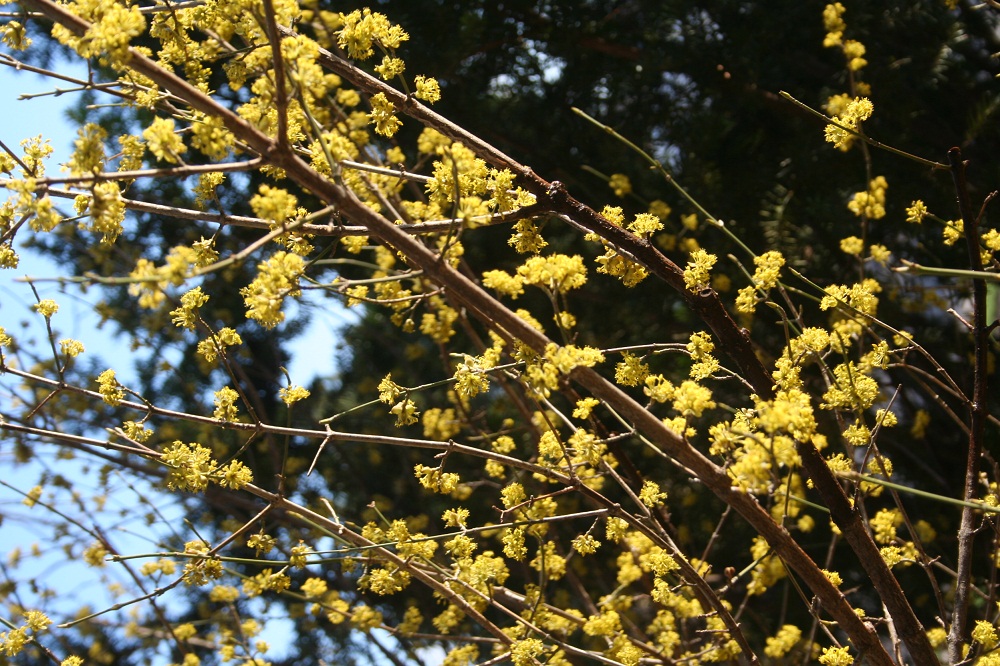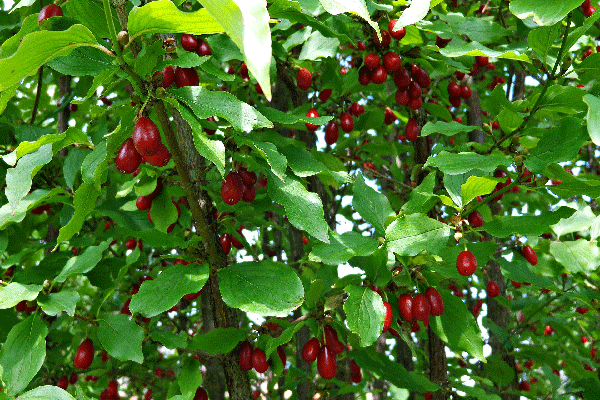There are very few shrubs that have the following of enthusiasts dogwoods have. They’re some of the best-known shrubs and most beautiful shrubs around. Dogwoods belong to the genus Cornus which contains many species native to the United Sates, Asia and Europe. In nature dogwoods thrive in the understory conditions at the forest’s edge. They can belong in the most refined of landscapes, or the most wild.
 Blossoms of Kousa dogwood.
Blossoms of Kousa dogwood. Dogwoods are grown for their attractive flowers, fruits, bark and fall color. They make a great habitat and food source for a variety of wild critters. The berries—in whites, reds and blues—are soon snatched up by birds. Dogwoods can be identified by their distinct falsely-parallel venation, opposite leaves (all but pagoda dogwood) and prominent lenticels.
While most people immediately think of flowering dogwood, native to the eastern United States, there are many other species more adapted to Nebraska’s climate.
The tried and true…
Cornelliancherry dogwood, Cornus mas, is known for its early spring bloom. It is quite a site to be walking along in early march and see this swath of yellow. Its fruit can be used to make jams. Probably one of the most tolerant dogwoods, adapted to high pH and clay soils as well as to drought. Will grow 20’ high and wide. Native to Europe and Asia.
Redosier dogwood, Cornus sericea, is common to the landscape. Several cultivars are available in varying heights. Its twigs are red in the fall and winter. Wildlife likes this shrub. Does fairly well in the drier part of Nebraska where foliar disease isn’t a problem.
Grey dogwood, Cornus racemosa. A tough dogwood more unrefined than most of its cousins though it works well in naturalized landscapes. Often grows 10’ high and wide.
For the brave at heart….
Kousa dogwood, Cornus kousa, is an elegant dogwood that is seldom seen in the landscape. Flowers are actually bracts that appear in the spring followed by red fruit in the fall.
Flowering dogwood, Cornus florida. A low-branching and spreading tree known for its showy bracts, red fruit and bright red fall color—but only under the right conditions, which may be rare in Nebraska. This dogwood is for the gardener with protection and patience.
Pagoda dogwood, Cornus alternifolia. An elegant dogwood similar to Cornus Florida in form, but a far better choice for Nebraska. White blooms in spring are followed by clusters of black fruit mid-summer. Needs protected, moist, well-drained understory conditions.

